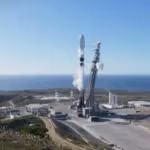
The emerging space warfighting doctrine that will adhere to concepts in the U.S. Space Force's Spacepower: Doctrine for Space Forces last year may include maneuver warfare to decrease the predictability of U.S. satellite orbits and increase deterrence against potential adversary nations. "We are only at the beginning of really formulating space warfighting doctrine--what does it mean," Lt. Gen. John E. Shaw, the deputy commander of U.S. Space Command, told a Mitchell Institute for Aerospace Studies Spacepower forum on Dec. 10.…














